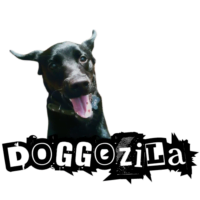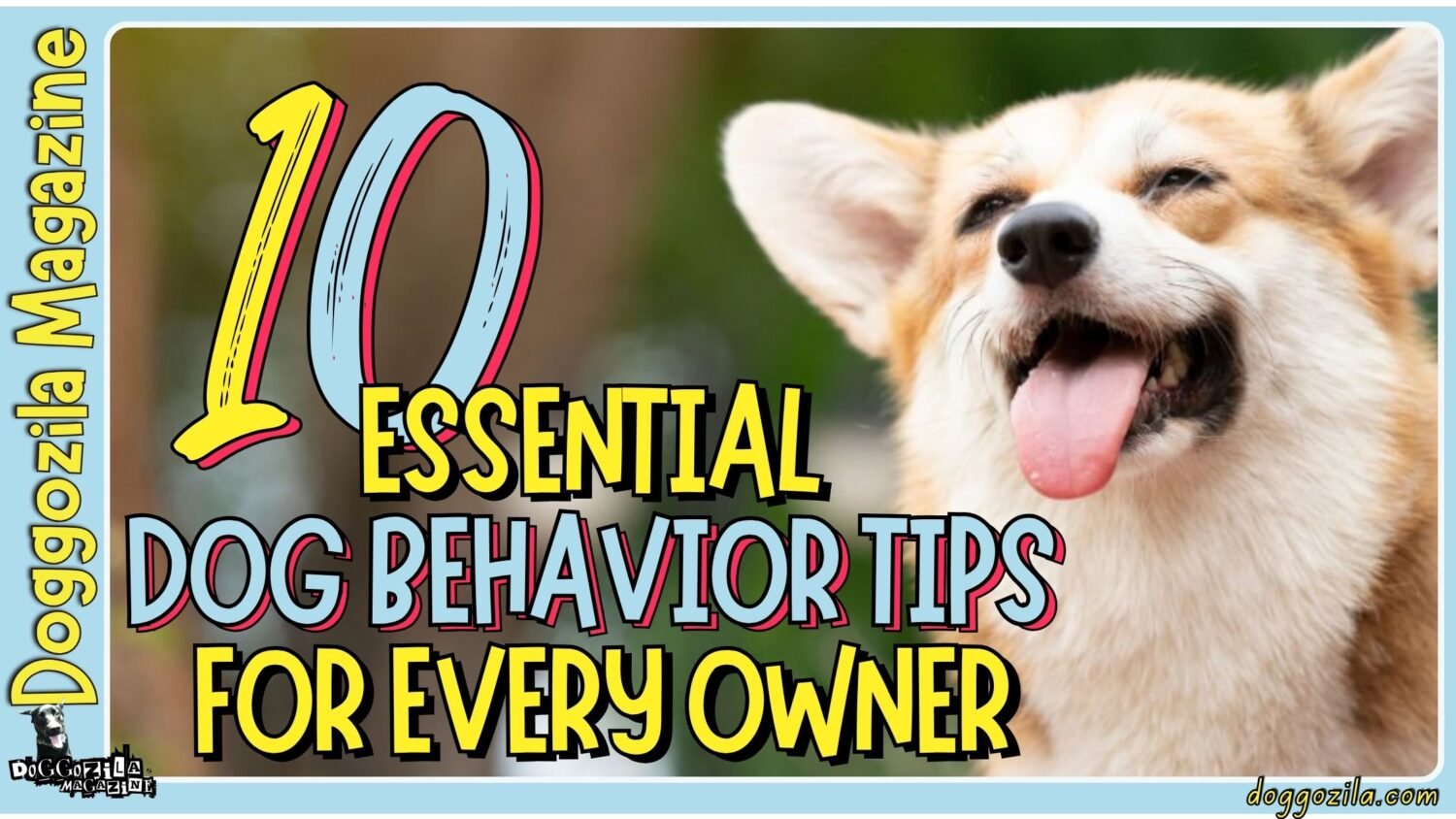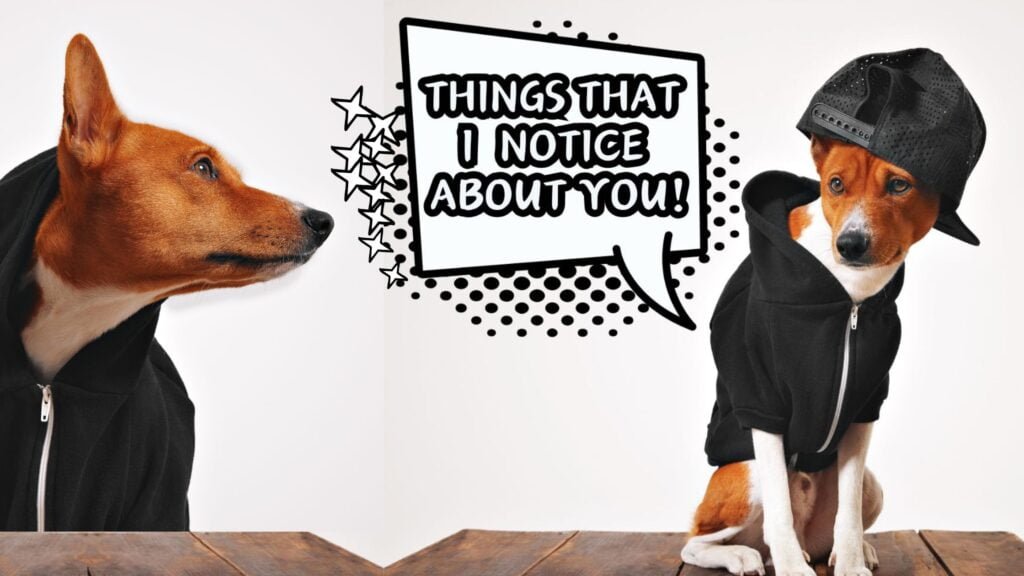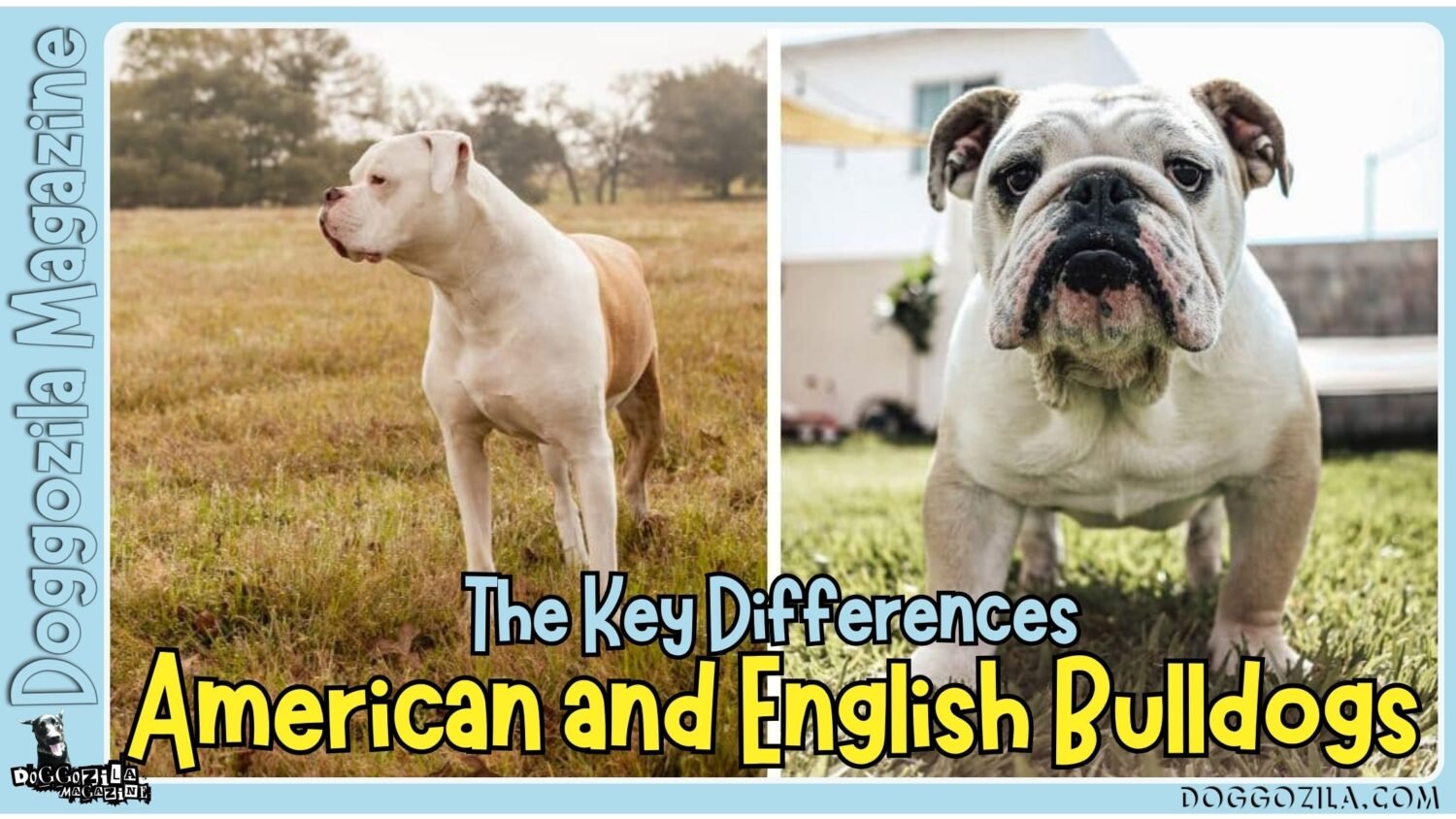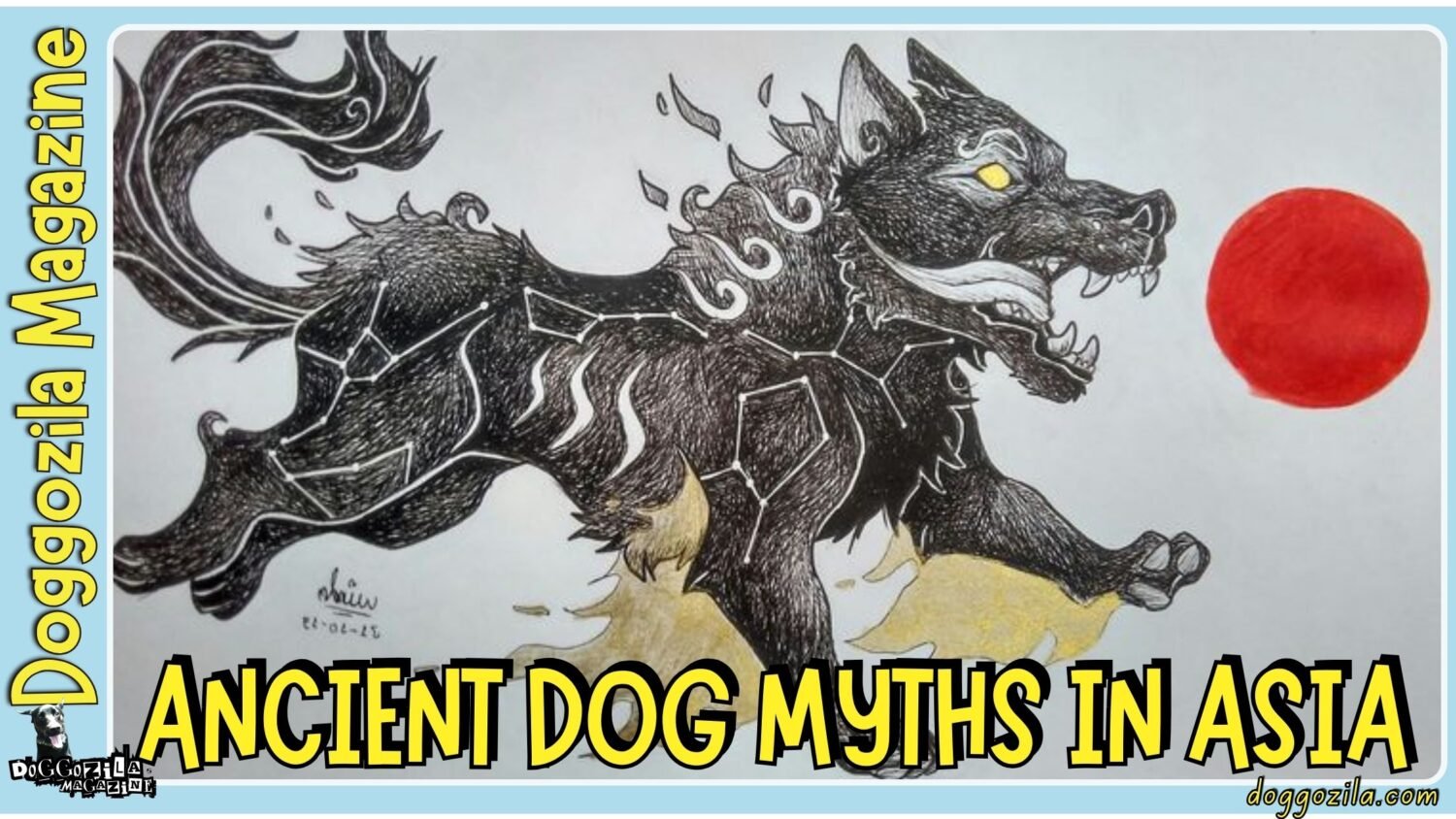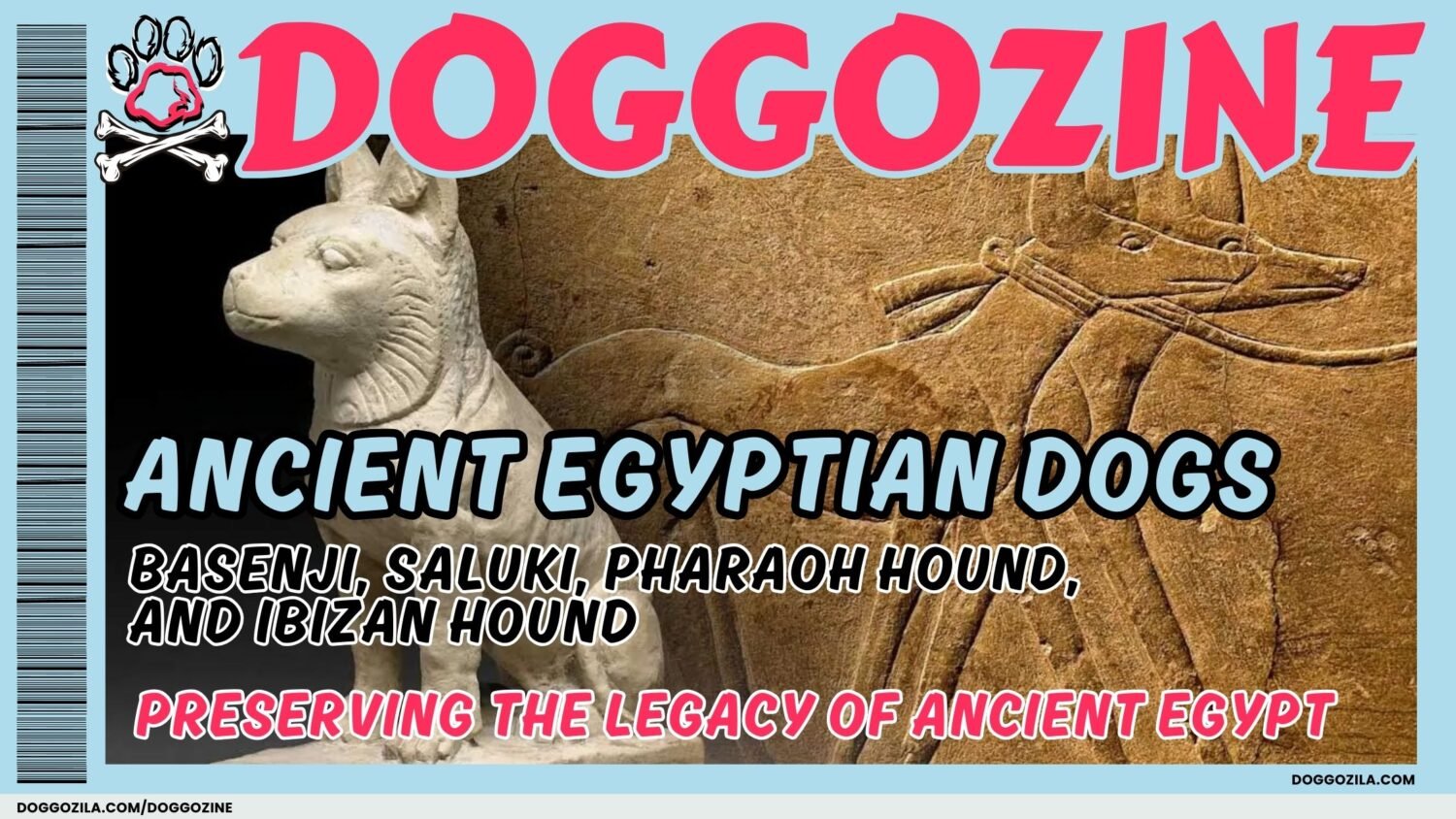Dog dancing, often referred to as canine freestyle, is an innovative and artistic activity that combines elements of obedience training, choreography, and dance. In this unique performance art, dogs and their handlers create synchronized routines set to music, showcasing their bond and mutual understanding. This fascinating discipline not only entertains but also exemplifies the incredible capabilities of dogs when guided by skillful trainers.
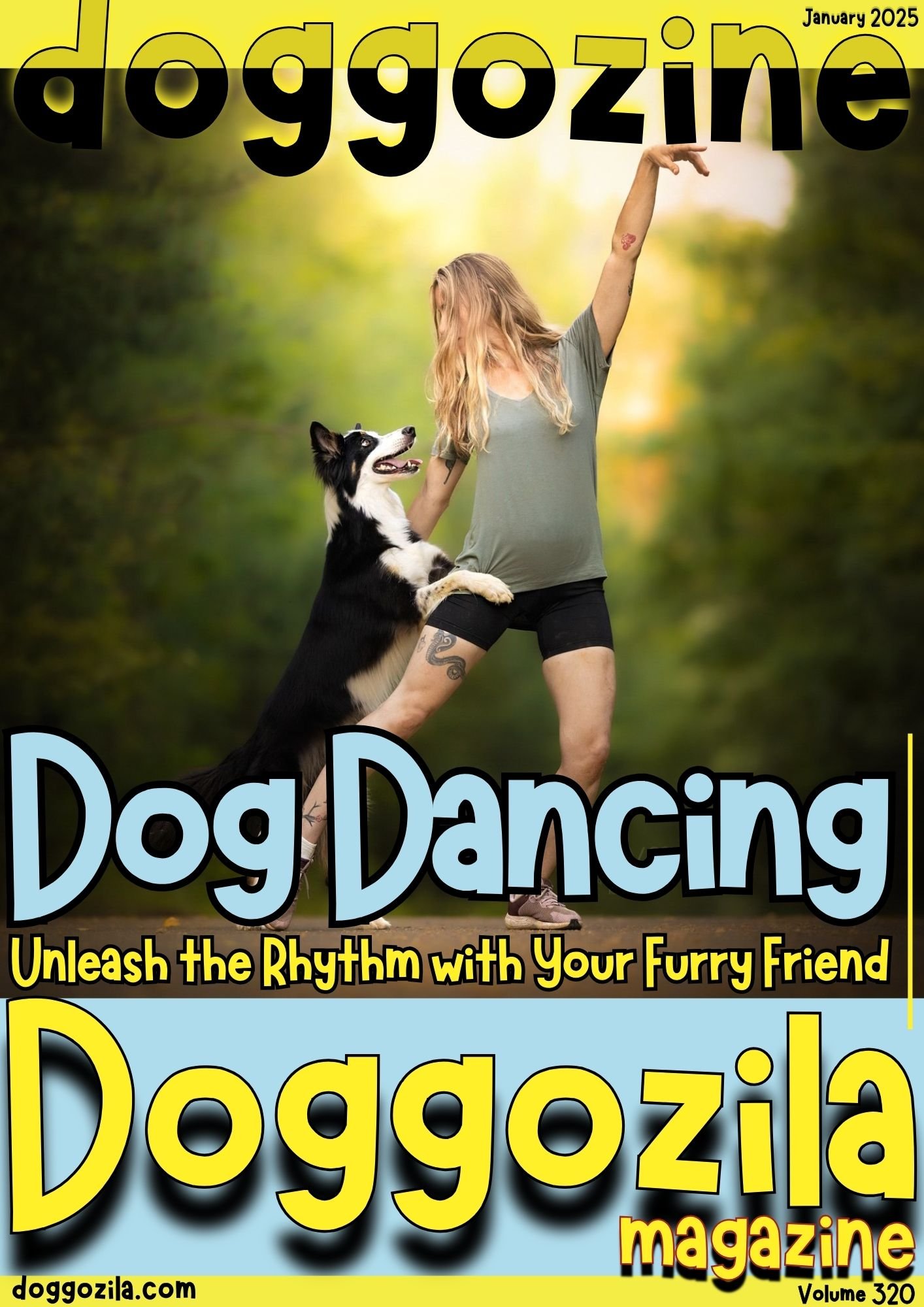
WHAT IS DOG DANCING?
The origins of dog dancing can be traced back to various traditional dog sports, but it gained significant prominence in the 1980s, especially when several trainers began to experiment with integrating dance into obedience routines. The sport has continued to evolve, gaining recognition worldwide, and is now featured in numerous competitions and exhibitions.
Dog Dancing as Traditional Dog Sport
It is essential to note that dog dancing is not merely a series of tricks performed in isolation, rather, it focuses on the seamless flow of movement between dog and handler, emphasizing their cooperation and artistry. In dog dancing, participants engage in a multitude of maneuvers that can range from basic obedience tasks, such as heeling and sitting, to complex movements that require agility and precision.
Dogs learn to execute these commands while navigating choreography that often resembles elements from various dance genres, such as ballet, jazz, or hip-hop. This combination of athleticism and artistry highlights the extraordinary capabilities of both dogs and their handlers, as they invest considerable time and effort into training together to perfect their routines.
Ultimately, dog dancing serves as a multifaceted platform where artistic expression meets athletic performance, creating a captivating experience for both performers and audiences alike. By embracing the principles of teamwork and creativity, participants can produce deeply engaging performances that celebrate the special relationship between humans and their canine companions.
🔑 Key Points: The origins of dog dancing can be traced back to 1980s. The sport has continued to evolve, gaining recognition worldwide!
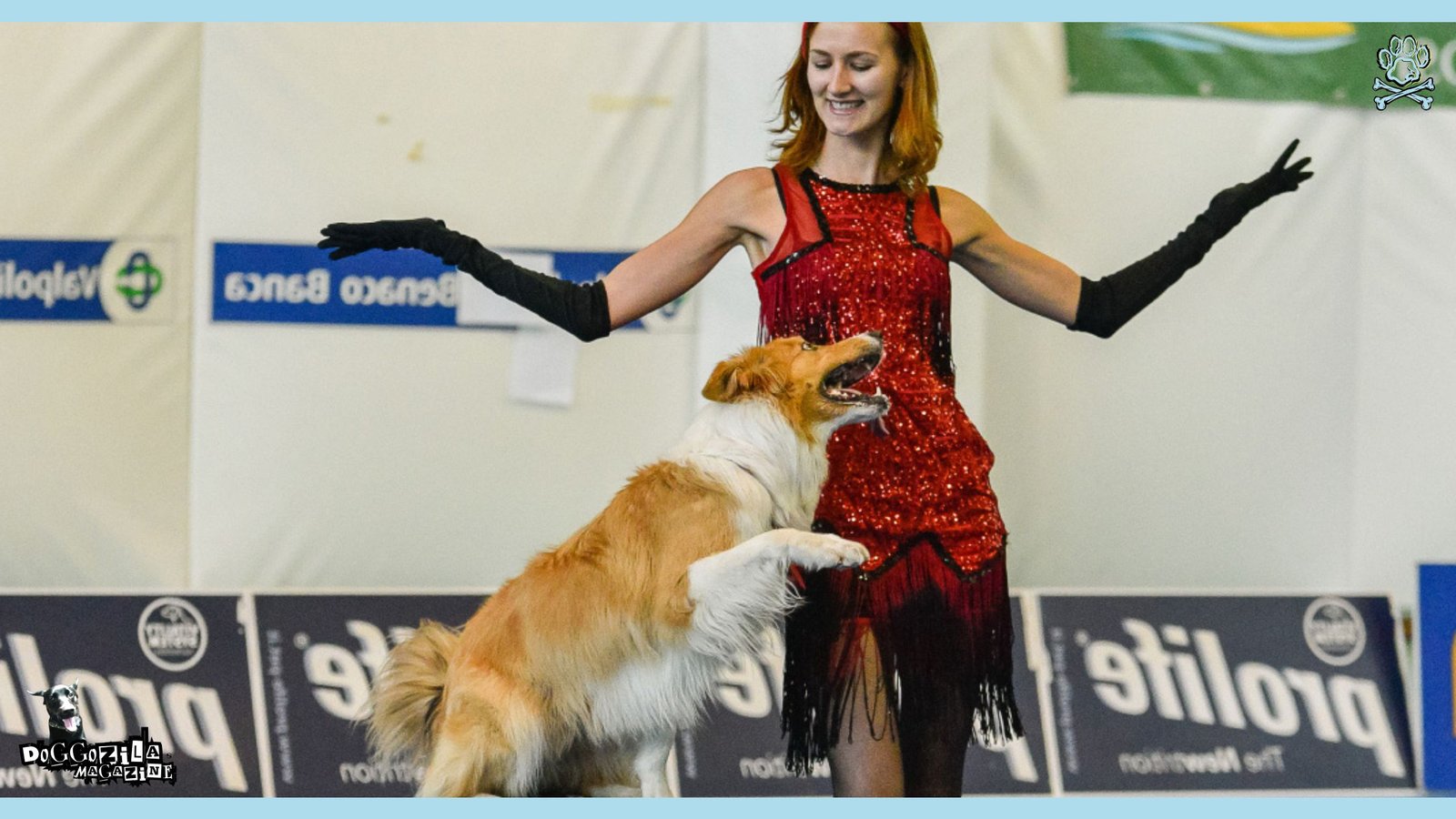
THE RISE OF DOG DANCING AS A SPORT
Over the past two decades, dog dancing has emerged as a captivating and increasingly popular sport, captivating audiences and participants alike. Initially introduced as a form of entertainment, this discipline combines the grace of dance with the agility and cooperation of canine companions. As more handlers and dogs have engaged in this unique activity, dog dancing has evolved into a recognized sporting event, showcasing the impressive synergy between humans and their pets.
Musical Dog Sport Association & World Canine Freestyle Organization
One significant factor contributing to the rise of dog dancing is the establishment of dedicated competitions, where handlers and their dogs can demonstrate their skills and creativity. These competitions typically consist of various categories, catering to different skill levels and styles, thus attracting a diverse range of participants.
Organizations such as the World Canine Freestyle Organization (WCFO) and the Musical Dog Sport Association (MDSA) have played a pivotal role, organizing events that not only encourage participation but also provide a platform for recognition and awards.
World Canine Freestyle Championship and the U.S. Canine Freestyle Federation’s National Championship
Furthermore, the popularity of dog dancing can be attributed to the rising number of dog training schools that offer specialized classes in this discipline. These institutions allow both new and experienced handlers to develop their skills, incorporating elements of choreography, obedience, and communication with their animals.
Events like the annual World Canine Freestyle Championship and the U.S. Canine Freestyle Federation’s National Championship are just a few examples of high-profile competitions that have helped elevate the sport’s visibility, drawing in large crowds and media attention.
The integration of dog dancing into mainstream culture can also be observed through various television shows, social media platforms, and online tutorials, which have showcased impressive routines and fostered a community of enthusiasts. As a result, dog dancing is gaining recognition not only as a hobby but also as a legitimate sport that enriches the bond between dogs and their handlers, promoting teamwork and mutual understanding.
🔑 Key Points: Organizations such as the World Canine Freestyle Organization (WCFO) and the Musical Dog Sport Association (MDSA) have played a pivotal role for the rise of the dog dancing sport. World Canine Freestyle Championship and the U.S. Canine Freestyle Federation’s National Championship are just a few examples of high-profile competitions where you can find this awesome sport.
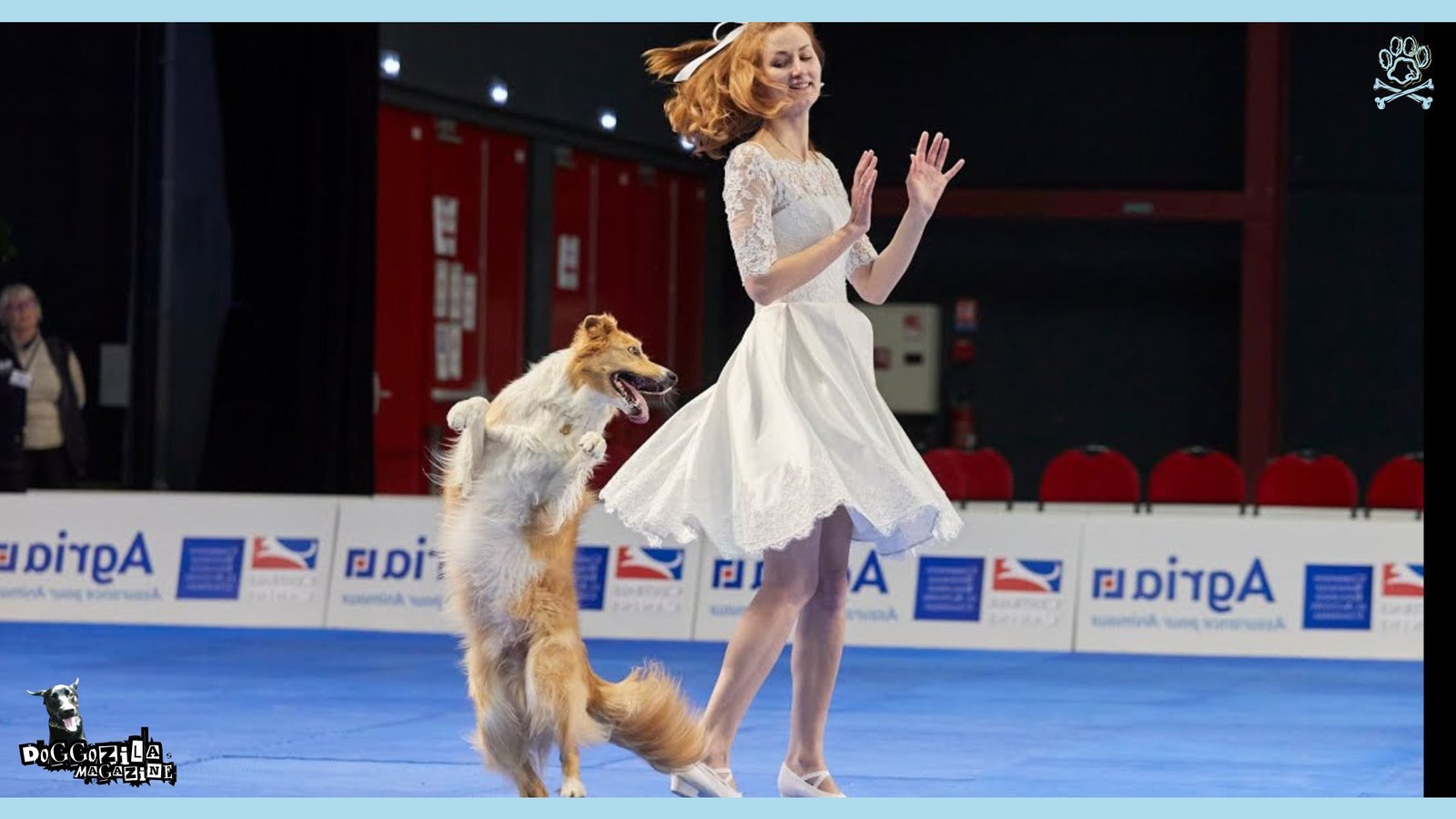
BENEFITS OF DOG DANCING FOR YOU AND YOUR DOG
Dog dancing, an engaging and dynamic activity, offers numerous benefits for both dogs and their handlers. At its core, dog dancing not only serves as a form of physical exercise but also promotes mental stimulation.
Dog Dancing Can Create Healthy Pets
Through learning and practicing various routines and tricks, dogs engage their minds, leading to improved cognitive function and behavioral skills. This exercise encourages dogs to think critically and make decisions, which can effectively reduce behavioral issues born from boredom or excess energy.
Moreover, dog dancing enhances communication between the dog and its handler. As both partners navigate intricate moves and coordinated routines, they develop a deeper understanding of each other’s signals and cues.
This form of non-verbal communication fosters a unique bond that enriches their relationship. The joy of performing together not only strengthens this connection but also encourages greater trust and cooperation during training sessions, ultimately enhancing the dog’s overall obedience and responsiveness.
Improving Behavioral Training with Dog Dancing
Participating in dog dancing can also serve as an excellent tool for improving behavioral training. The structured routines require discipline and focus, which can translate to better behavior in other areas of the dog’s life. Engaging in regular dancing sessions can reduce anxiety and hyperactivity.
The physical and mental exercise that dog dancing provides can lead to a more balanced and well-adjusted pet. Additionally, the fun and playful atmosphere of dog dancing can motivate dogs to learn new commands more readily, making training sessions more enjoyable for both parties.
Beyond these advantages, dog dancing serves as a delightful bonding experience that can reignite the sense of playfulness between the dog and its owner. It highlights the joy of collaboration through structured routines and performances, thus making it a rewarding venture that brings health, happiness, and harmony to human-canine partnerships.
🔑 Key Points: Through learning and practicing various routines and tricks, dogs engage their minds, leading to improved cognitive function and behavioral skills.
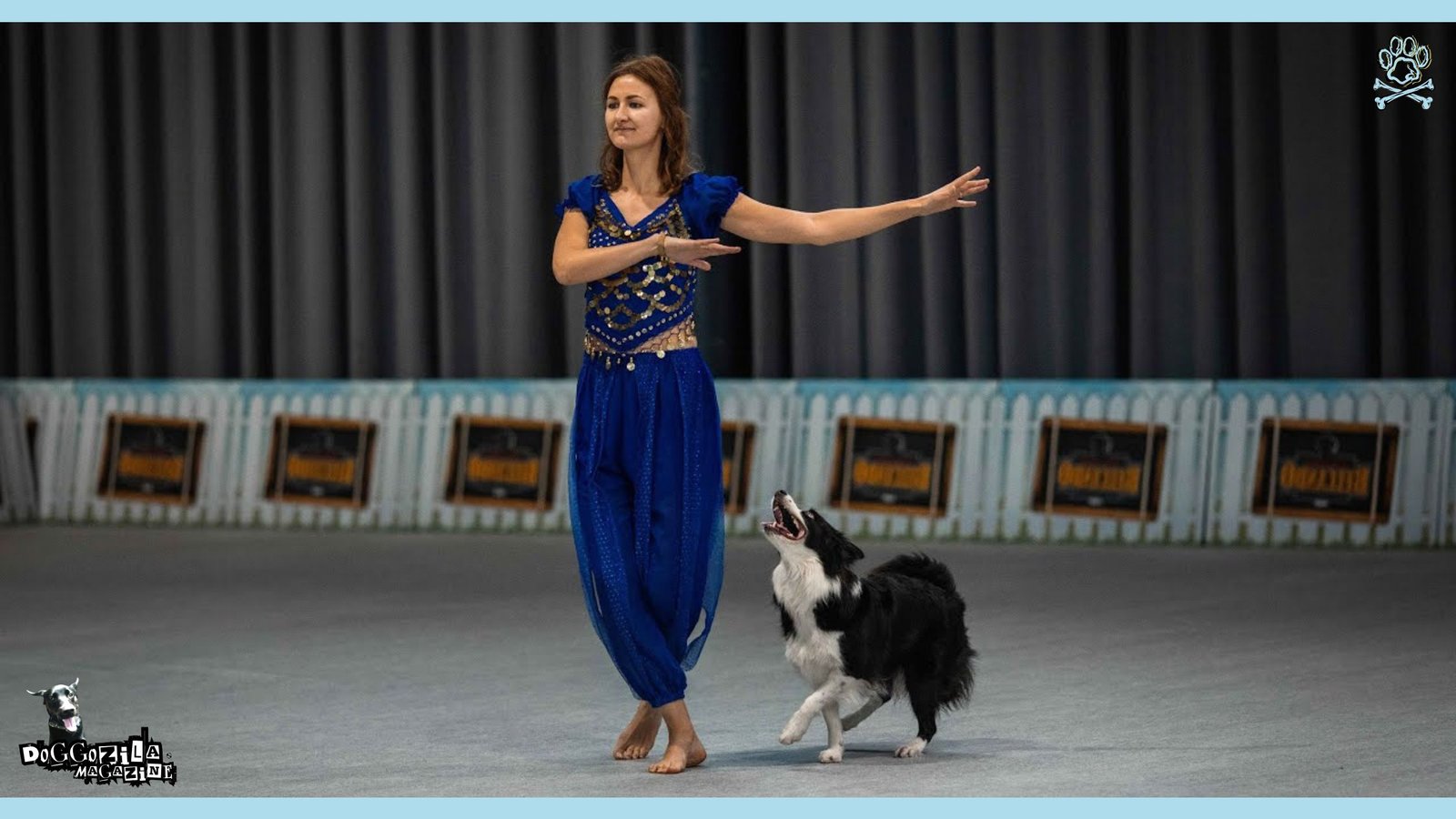
BASIC TRAINING TECHNIQUES FOR DOG DANCING
Dog dancing, also known as canine freestyle, is a captivating way to foster the bond between dog and handler while promoting physical and mental stimulation. Establishing a solid foundation is crucial for success in this activity, and mastering basic training techniques is the first step in this journey.
How to Start the Training of a Future Dog Dancer?
Essential commands such as “sit,” “stay,” “heel,” and “spin” provide the groundwork for more advanced movements and routines. These commands not only help in managing the dog’s behavior but also contribute to the overall performance in dog dancing.
Positive reinforcement is an effective method to encourage desired behaviors in dogs. This technique involves rewarding the dog with treats, praise, or playtime when they successfully execute a command. By consistently using positive reinforcement, handlers can motivate their dogs to enjoy the learning process.
It is important, however, to ensure that the rewards are appealing and relevant to the dog, thus increasing the likelihood of repeated success. Building confidence in dogs is also essential for a successful dog dancing experience. Handlers should gradually introduce new commands and movements, allowing their dogs to become comfortable and secure in their abilities.
Consistency and Patience Will Reward You
Working in a distraction-free environment initially can help minimize anxiety and allow for focused training sessions. Furthermore, trainers should always remain patient and allow sufficient time for their dogs to grasp new concepts. Different dogs have varied temperaments and learning styles, necessitating customized approaches during training.
It is vital for handlers to assess their dog’s unique characteristics and adapt their techniques accordingly. Some dogs may thrive with a more energetic approach, while others might respond better to a calm and gentle demeanor. Consistency and patience in training sessions enhance the dog’s learning curve and promote an enjoyable experience for both the dog and the handler.
🔑 Key Points: Dog dancing, also known as canine freestyle, is a captivating way to foster the bond between dog and handler while promoting physical and mental stimulation.
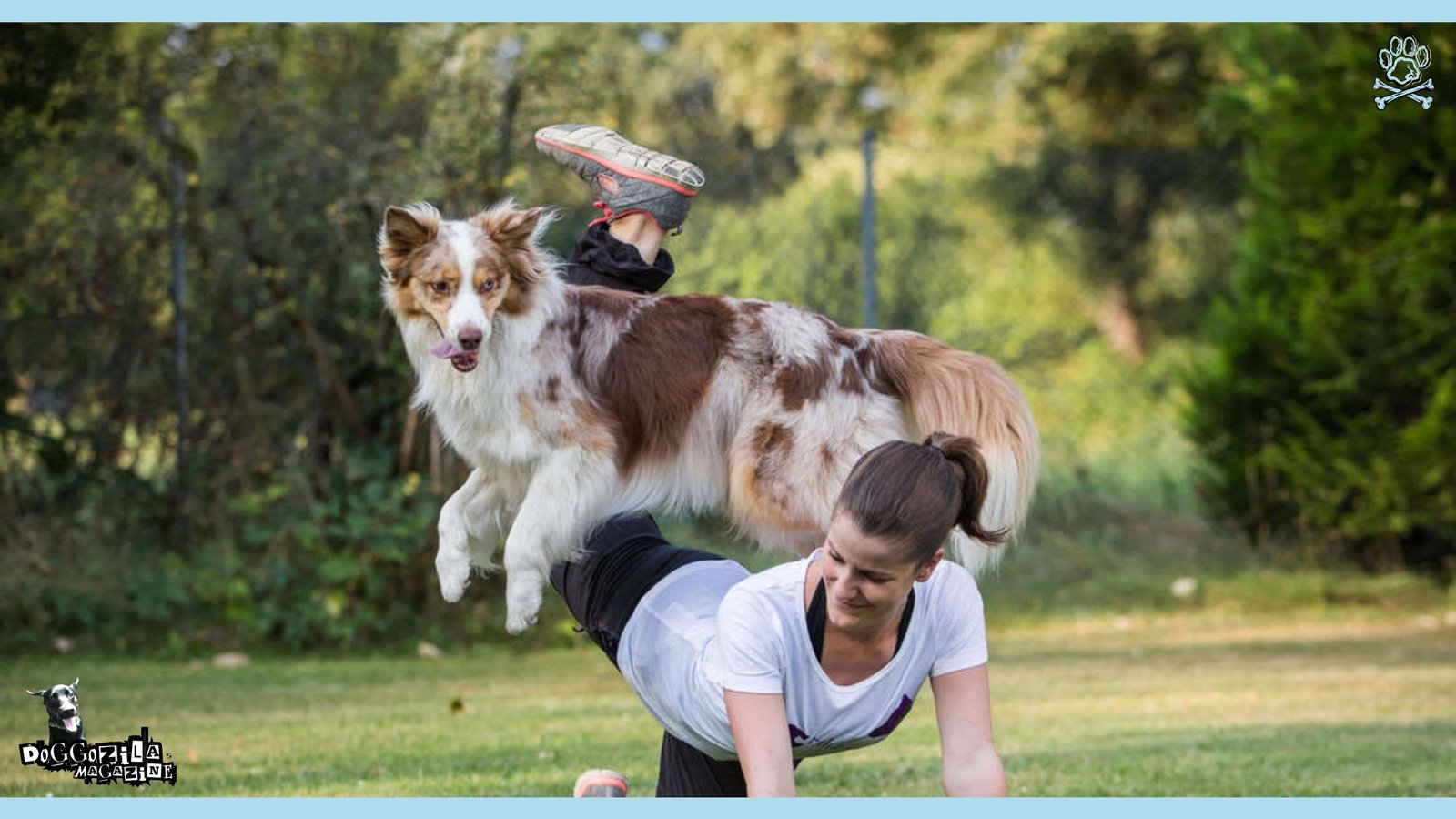
CANINE FREESTYLE HEELWORK: HOW TO GET STARTED WITH DOG DANCING?
Freestyle heelwork is a foundational element of dog dancing that emphasizes the bond and communication between a handler and their dog. This discipline involves the dog moving in coordination with the handler, typically positioning themselves closely alongside the handler’s left side. To successfully execute freestyle heelwork, several core components must be addressed, including posture, positioning, and techniques for smooth transitions between movements.
Handler’s Posture Encourage Dog’s Focus
One of the first aspects to consider is the handler’s posture. A strong, upright posture not only conveys confidence but also allows for clearer communication with the dog. Handlers should stand tall, with shoulders back and a relaxed demeanor, projecting a sense of leadership that encourages the dog’s focus and attentiveness. It is important for the heelwork practice to be enjoyable and engaging for the dog, which is influenced significantly by the handler’s physical presence.
Positioning and Smooth Transitions Between Movements
Positioning is another crucial element in freestyle heelwork. The goal is to have the dog consistently in the heel position, which may require practice and reinforcement. Handlers should aim to train their dogs to remain by their side, respond to verbal cues, and exhibit proper alignment during various movements. Utilizing treats and positive reinforcement techniques can greatly enhance a dog’s willingness to maintain the desired position during training sessions.
To facilitate smooth transitions between movements, handlers should focus on clear cues and timing. Exercises that involve changing direction, speed, or performing specific maneuvers can help emphasize the importance of synchronization. Starting with simple transitions, such as walking forward, then pivoting or stopping, allows both the handler and the dog to build a foundation for more complex movements.
For beginners looking to engage in dog dancing, incorporating basic exercises that focus on heelwork, such as short heeling sessions, will be beneficial. These practice sessions allow for gradual progression, promoting both the dog’s physical skills and enhancing the bond between the handler and their canine partner.
🔑 Key Points: Freestyle heelwork is a foundational element of dog dancing that emphasizes the bond and communication between a handler and their dog. To successfully execute freestyle heelwork, several core components must be addressed, including posture, positioning, and techniques for smooth transitions between movements.
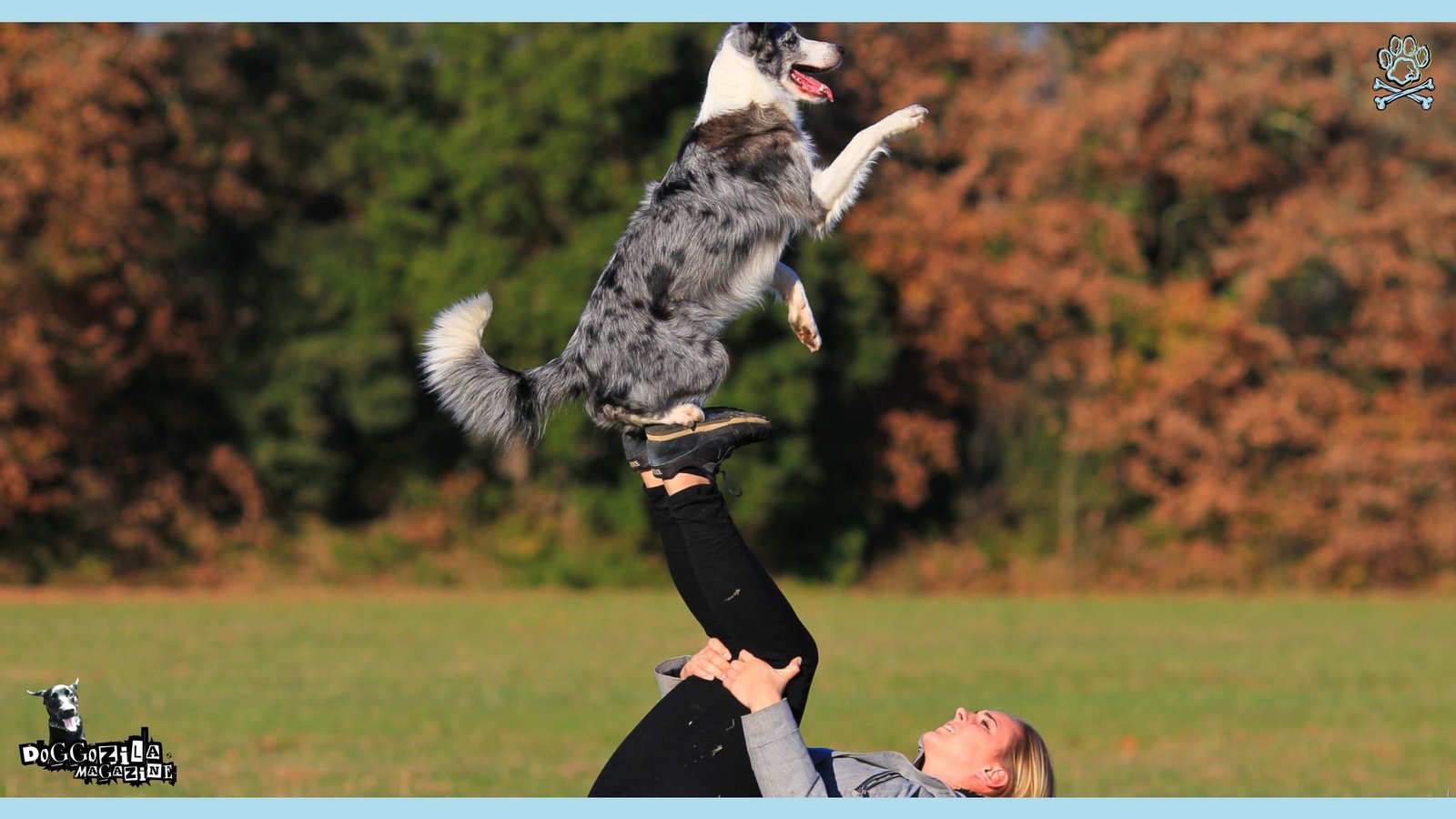
CHOOSING THE RIGHT MUSIC FOR YOUR PERFORMANCE
In dog dancing, the selection of music is paramount to creating a captivating routine that resonates with both the audience and performer. The right track not only enhances the visual spectacle but also serves to unify the movements of the dog and handler.
Choose Music that Reflect Your Movements
When choosing music, it is essential to consider the rhythm, tempo, and overall mood, as these elements play a significant role in a dog’s performance. A harmonious blend of these factors can elevate the performance to a professional level.
- Rhythm: First, understanding the rhythm is crucial. The rhythm of the music dictates the timing of the movements and tricks performed by the dog. Therefore, selecting a piece that has a clear beat will help in synchronizing the dog’s actions with the musical elements. A distinct rhythm allows handlers to plan transitions and movements effectively, creating a seamless flow in their routine.
- Tempo: Next, tempo is another critical component to consider. Fast-paced music can energize a routine, particularly when the dog is executing quick tricks or agility movements. Conversely, slower music may be more fitting for gentler, more fluid movements, allowing for an expressive performance that showcases the bond between dog and handler. Consequently, the tempo should align with the performance style: whether it’s an upbeat show-stopping act or a serene display of grace.
- Music Genre: Lastly, matching the musical genre to the choreographed routine is vital. Certain genres evoke specific emotions and can enhance the overall presentation. For instance, classical music often complements elegant choreography, while contemporary tracks might suit dynamic routines that emphasize energy and agility. By carefully selecting tracks that reflect the intended style, handlers can create an engaging experience that captivates their audience and highlights their dog’s talents.
🔑 Key Points: Key Points: The right track not only enhances the visual spectacle but also serves to unify the movements of the dog and handler. Top three most important things for choosing the right track or song are the tempo, rhythm and the genre.
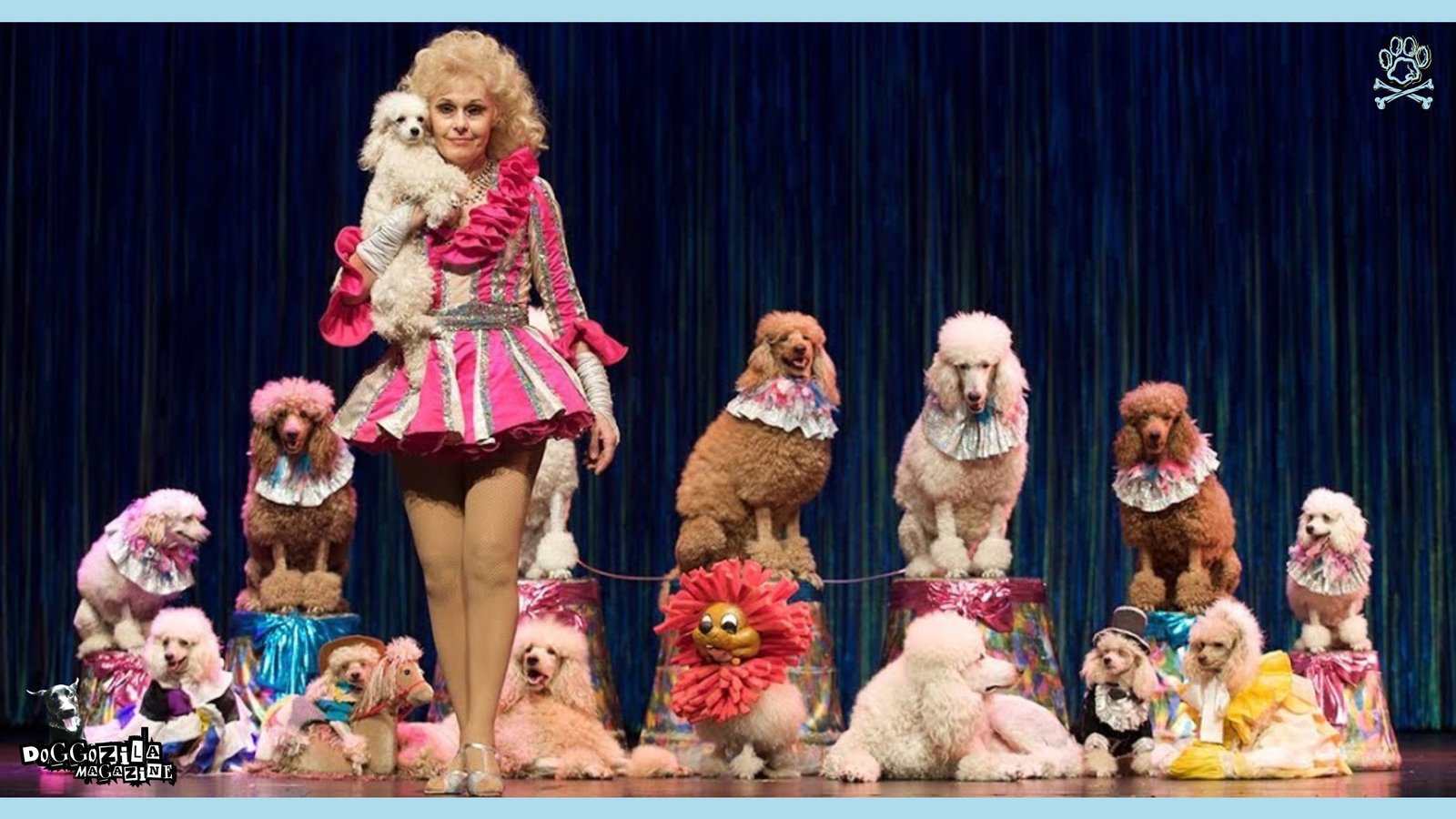
TIPS FOR COMPETING IN DOG DANCING EVENTS
Competing in dog dancing events presents an exhilarating opportunity for both handlers and their canine companions to showcase their skills and creativity. To succeed in such competitions, it is essential to familiarize oneself with the specific rules and formats.
Strategically Plan Your Routine
Different organizations may have varying guidelines regarding allowed moves, music selection, and scoring criteria. Therefore, researching the regulations of the particular event ensures you are well-informed and can strategically plan your routine. A crucial aspect of preparation is the selection of music that complements your dancing routine.
Choose tracks that resonate with the personality of your dog while also creating a harmonious balance between rhythm and movement. It is beneficial to choreograph routines that highlight each participant’s strengths. Focus on creating a sequence that showcases your dog’s natural talent, whether they excel in agility, flexibility, or rhythm. Simple yet effective moves can often leave a lasting impression on judges.
Practice, Mental Preparation and Remember to Have Fun
Practice is undeniably key to success in dog dancing. Regular rehearsals help to build confidence for both you and your dog, ensuring that each element of the routine becomes second nature. Integrating feedback from trainers or peers can provide additional perspectives that refine your performance and enhance the overall quality of your routine. Observing other successful competitors can also serve as a source of inspiration and insight into effective techniques.
In the lead-up to the event, consider the importance of mental preparation. Maintaining a calm and positive mindset aids in alleviating performance anxiety, further allowing the partnership between handler and dog to shine. Remember that joy and enthusiasm resonate with both the audience and judges. Effectively combining all these elements will not only enhance performance but also make the experience of dog dancing an enjoyable one for both partners.
🔑 Key Points: Competing in dog dancing events presents an exhilarating opportunity for both handlers and their canine companions to showcase their skills and creativity.
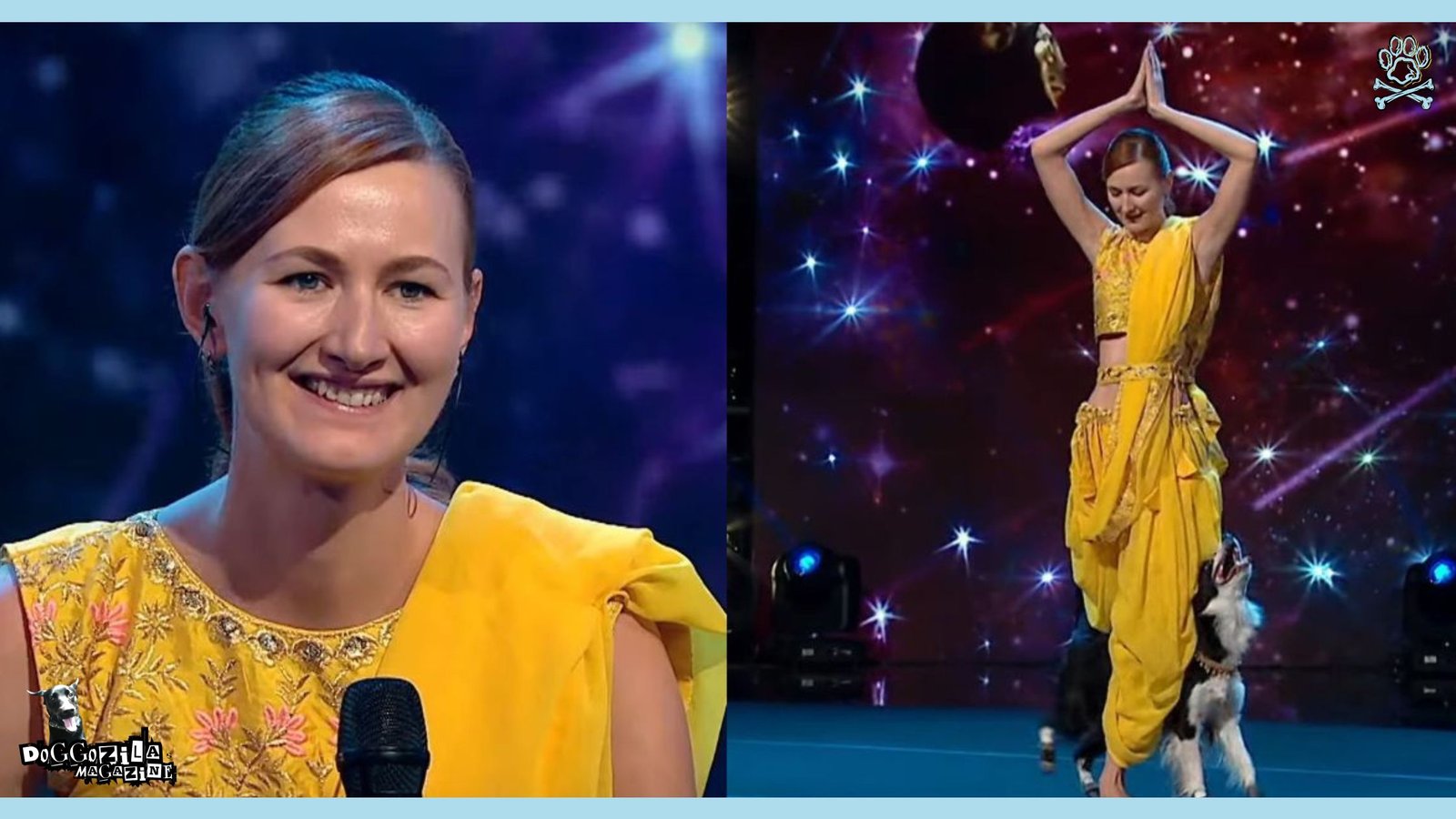
FAMOUS DOGS AND HANDLERS IN DOG DANCING
Dog dancing is not just a fun activity, but it’s an art form that showcases the incredible bond between dogs and their handlers. Competitive dog dancing events allow these pairs to show off their skills in a choreographed routine, combining both obedience and creativity. Throughout the years, several dogs and their handlers have captivated audiences and judges alike, claiming numerous titles in various contests.
Let’s take a closer look at some of the most famous dogs and their talented handlers in the world of dog dancing!
Famous Dogs Who Stepped Up to the Spotlight
When you hear the word ‘champion’ in dog dancing, chances are you might be thinking of some remarkable canines who have shined on the big stage. One of the standout performances comes from a graceful border collie named “Riley.” Handled by the extraordinary Emily, Riley has snagged numerous awards across the United States and beyond. This dynamic duo is known for their innovative routines that perfectly blend agility and rhythm.
Another spectacular canine is “Daisy,” a playful poodle that has melted hearts at competitions. With her handler, Tom, Daisy has achieved national recognition for her spirited performances and exquisite footwork. Whether it’s a lively samba or a smooth waltz, Daisy and Tom know how to work the crowd!
Handlers Who Made an Impact
It’s not just the dogs that steal the thunder; their handlers deserve a spotlight too. One such individual is Sarah, who has been a leading figure in the dog dancing community for over a decade. Known for her innovative training techniques, Sarah has guided an impressive array of dogs to victory in various competitions. Her passion for dog dancing isn’t just a career; it’s a way of life that inspires countless aspiring handlers.
Next up is Mike, a seasoned handler with an impressive repertoire. He is famous for his intricate moves and understanding of dog behavior, which has positively affected his approach to training dogs for dance routines. Together with his dog “Flare,” Mike has won numerous championships, earning a reputation as one of the best in the business.
The Future of Dog Dancing
As dog dancing continues to grow in popularity, more and more talented dogs and handlers are emerging onto the scene. This evolving sport encourages creativity and emphasizes the unique connection shared between dogs and their companions. Each performance is a testament to the hours of training, dedication, and love that go into dog dancing.
Whether you’re a spectator or someone considering entering the world of dog dancing, there’s a thrill that comes with watching these dogs perform. Keep an eye out for exciting competitions and newly crowned champions. Who knows? The next superstar dog and handler may be just around the corner, ready to dazzle the audience with their amazing skills!
Dog Dancing World Championship
Anastasiia Beaumont and border collie Yuki
